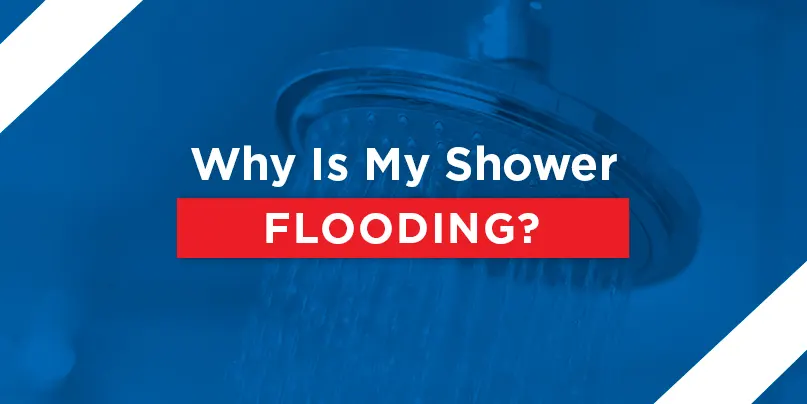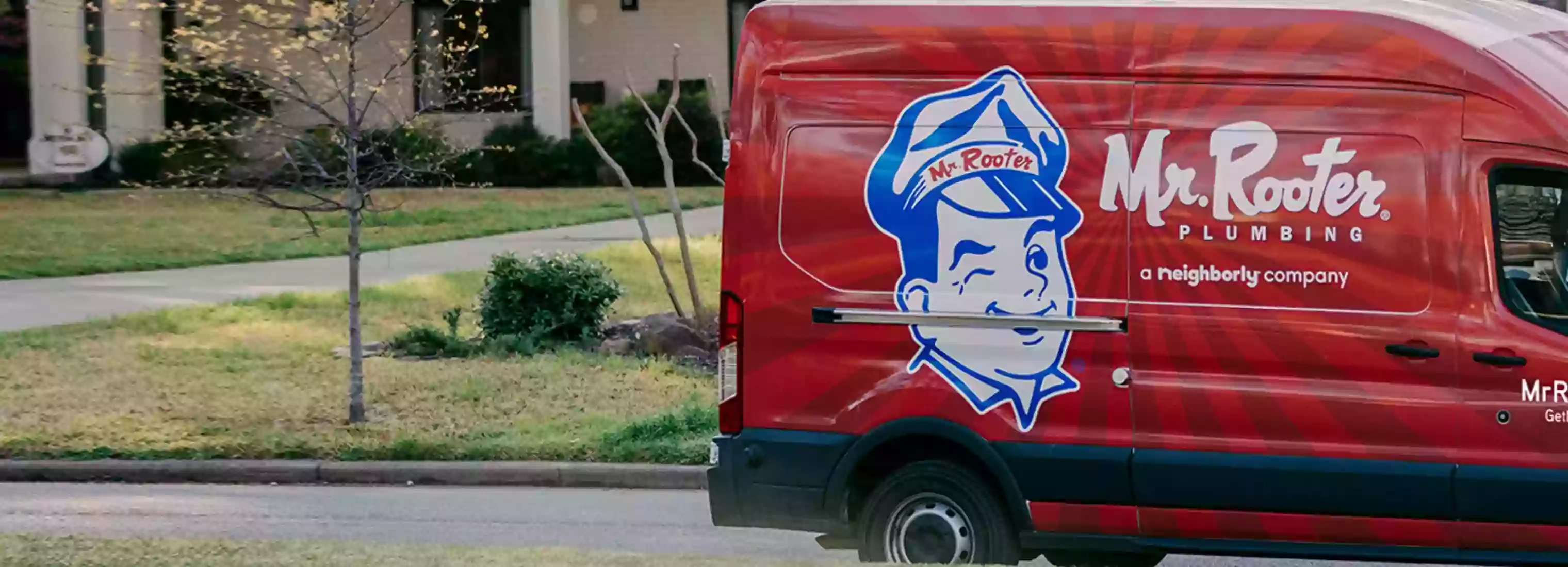Why Is My Shower Flooding

Table of Contents:
- How to Clean Up a Flooded Bathroom
- How to Remove the Shower Drain Cover
- How to Clear a Clogged Shower Drain
- What to Do When You Cannot Clear the Clog
- How to Prevent Shower Flooding
- Contact Mr. Rooter for Help With All Your Plumbing Needs
If you're finding water on the bathroom floor after a shower or notice murky water pooling around your ankles while you take a shower in your tub, then you most likely have a clog in your pipes that is not allowing water to drain properly. In some cases, you may notice that the shower drains slowly but is not clogged all the way. This is still an issue you should address right away.
This is a common issue, and there are plenty of ways to fix it, so don't panic — even if your bathroom is flooded. After cleaning up the mess, try the methods we'll discuss for how to unclog a shower drain with standing water. If you still need some assistance, call the professionals at Mr. Rooter Plumbing of Greater Syracuse.
How to Clean Up a Flooded Bathroom
Before we talk about the causes and remedies for a flooding shower, let's start with your first priority — cleaning up the water. If you have a bathtub that is draining slowly or not at all while you are running the shower, you should stop the water before the level rises too high. This way, you won't have a mess to clean up. However, if you have a walk-in shower that is not draining, you could quickly end up with water on your bathroom floor.
If you catch the issue early on, shut off the water and soak up the standing water with towels or a mop. A wet/dry shop vac can also help you remove the water if you have one of those. If your bathroom is flooded enough that outlets could get wet, make sure you shut off the electricity to the room to avoid any risk of electrocution.
Once you have gotten the majority of the water off the floor, you will want to use circulating air to dry out the room the rest of the way. If you have a window in the bathroom, open it. Set up some fans, as well, being careful to keep cords out of water. You can also set up a dehumidifier to help remove excess moisture in the air.
Common Causes of a Clogged Shower Drain

Why is your shower flooding in the first place? Finding the cause of the flood should not require much investigation. The problem likely lies with an obstruction that is clogging your shower drain. Clogs can be caused by:
- Soap: If you wash with soap in the shower, soap scum can end up in your shower drain, where it is prone to stick to the walls of the drain and bind to hair and other objects in the drain.
- Hair: It's normal to shed 50 to 100 strands of hair on an average day, so it's no wonder that hair can be a major culprit when it comes to shower drain clogs. Hair can get wrapped around other items, making existing blockages worse.
- Minerals: If you have hard water in your home, then you may experience clogs that slowly build up over time from mineral deposits in your drain. You may also notice mineral buildup on your shower head.
- Debris: Ever notice how much sand washes down the drain after you have been to the beach? What about the dirt you wash off of your children or pets in the shower? Debris like dirt and sand can build up in your shower drain and cause a blockage.
- Small items: Depending on how large the openings in your drain cover are, small items may be able to pass through and get stuck in your drain. For example, a plastic lid from a shampoo bottle could get washed down the drain and cause a clog.
In many cases, your drain will become clogged due to a combination of several of the culprits above.
How to Remove the Shower Drain Cover
If the water cannot go down, it will instead come right back up. So, the way to fix a clogged shower drain is to clear the blockage. There are several ways you can attempt to do this. In most cases, your first step will be to remove the shower drain cover.
Depending on the type of drain cover you have, you may need a screwdriver or a pair of pliers to remove it. Some drain covers, such as pop-up and flip-it styles, won't require any tools at all. You'll want to wear gloves since the drain cover may come up with a good deal of soap scum, hair or other material clinging to it.
How to Clear a Clogged Shower Drain
The simplest thing to try first is to unscrew and remove the drain cover and see if you can spot the blockage near the opening of the drain. If not, the blockage may be in the P-trap or lower down. If you see the blockage, you may be able to remove it by hand. For instance, you may encounter a wad of tangled hair that you can pull out fairly easily.
After removing what appears to be the source of the problem, try running the water again to see whether it is draining normally. If the shower is still draining slowly or is not draining at all, then you may have additional blockages that need to be cleared. When you cannot remove the blockage by hand, it's time to try some other methods that will help extend your reach beyond the top of the drain.
We will look at five methods to try and then talk about what you should do if you still cannot clear the clog in your shower drain.
1. Plunger
Some clogs can be cleared using a plunger. This method works best for tubs rather than walk-in showers since you will need enough water to cover the cup lid on the plunger. After removing the drain cover, coat the edge of the plunger in petroleum jelly to help with the seal. Position the plunger over the drain opening and plunge forcefully.
Whether this method works will depend on what type of blockage you have, how the drain is designed and where the blockage is located in the drain. In some cases, it will be difficult or impossible to get enough suction to effectively draw up the blockage. If plunging doesn't work, try another method to clear the clog.
2. Drain Snake
Now let's talk about how to unclog a shower with a snake. This is a popular method you can try on your own at home, though it's always safer and easier to hire a professional plumber to snake your drain. A professional drain snaking is typically an affordable service, too, so if you're worried about damaging your pipes, play it safe and call in the pros.
To try it on your own, purchase a drain snake from your local hardware store. Make sure you choose a standard drain snake with a cable that is 1/4 or 5/16 inches thick. A heavier cable may be too thick to curve around the bends of your drain, especially the P-trap, and could end up damaging the inside of your drain line.
Push the snake into the shower overflow drain if you have one and continue to run it down until you feel an obstruction. Turn the handle on the snake and pull it back up. If your snake comes up with a wad of hair or another type of clog, then try running the water and see if it drains properly. If so, your job is finished.
You can also fashion a DIY drain snake using a wire coat hanger. Using needle-nose pliers, pull the hanger apart into one long wire. Try to get it as straight as possible. Now bend the end into a small hook that extends about 1⁄4 inch. Shine a flashlight down the drain to see if you can find the clog so you can more easily pull it up. Push the wire down the drain with the hook on the end and move it around to help it hook onto a clog.
You may have to repeat this process a few times to get the whole clog out. Using a drain snake will take care of the problem much of the time, but it won't be able to clear certain types of blockages, such as mineral deposits.
3. Boiling Water
A natural way to clean a shower drain that doesn't require any special tools is to pour boiling water down the drain. Boil some water on the stove or in an electric kettle and pour it straight down the shower drain. Note that this method works best for metal plumbing pipes. If you have PVC pipes, make sure the water is no hotter than 175 degrees since, otherwise, it could start to melt your pipes.
Boiling water won't always clear the blockage, but it is sometimes enough to dislodge whatever is clogging your drain. For instance, when your shower drain is clogged with hair that is being held together by soap scum, this clog can start to break up and move along the drain as the hot water melts the soap. After you have poured the boiling water down your drain, run the shower and see whether it drains as it should or whether you need to try another method to fix the clog.
4. Baking Soda and Vinegar
The P-trap is a bend in the shower drain that is designed to hold enough water to keep odors from your drain pipes from escaping into your bathroom. Soap scum and other substances can build up in the P-trap, leading to a clog in this section of your drain. If you have access to the P-trap, you may be able to unscrew it and clean it out manually before putting it back.

There is another way to clean your shower drain P-trap that doesn't involve removing it. Measure out 1/2 cup of baking soda and pour it into the open shower drain. Next, measure 1/2 cup of vinegar and pour it down the drain. If you've ever built a model volcano for the science fair, then you know what happens next. The baking soda and vinegar react with each other and froth up.
Use a bowl or plate to cover the drain so the baking soda and vinegar can take effect inside the drain for at least a half-hour up to an hour. After this amount of time has passed, pour hot water down the drain and see whether the problem has been fixed. Even if you still have a clog somewhere, it is always a good idea to clean and deodorize your p-trap periodically.
5. Chemical Cleaner
Finally, if you cannot remove the clog through manual or natural cleaning methods, you can try a chemical cleaner designed to unclog drains. For many homeowners, a cleaning product like this may be their go-to solution for clearing a drain clog, but it is better to treat it as a last resort. This is because the harsh chemicals in these products can damage your pipes, especially if you use too much or use this method too frequently. Home remedies for clogged shower drains will be gentler on your pipes.
When you use a chemical cleaner, be sure to carefully follow the instructions on the bottle to ensure you use the appropriate amount of cleaner. Never mix cleaners since you could create a poisonous chemical reaction. Since most of these cleaners are dangerous, you should wear gloves and eye protection while you pour the cleaner down the drain. Once the cleaner has had a chance to work, run the water and see if it drains.
What to Do When You Cannot Clear the Clog
If you've tried the five methods above and your shower still is not draining properly, this is a good sign that the clog may be located in your main sewer line rather than in the shower line. When this is the case, it is time to call a plumber. A professional plumber can snake your drain and remove the blockage or determine whether you are dealing with a more serious issue, such as tree roots that have crept into your sewer line.

Whatever the issue is, a plumber will be able to investigate and figure out the best way to fix it. If the plumber only needs to snake the drain, this is a relatively affordable solution. You should not risk trying to work on your plumbing pipes on your own if you are not sure where the problem lies or how to fix it. When in doubt, call the professionals to come out.
How to Prevent Shower Flooding
Now that you know how to fix a clogged shower drain, let's take a moment to discuss how you can avoid a clogged shower drain and standing water in the first place. Here are a few steps you can take to prevent clogs in your drain:
- Use a drain cover with holes small enough to let water pass through without allowing small objects or debris down the drain.
- Catch as much hair as possible when showering and throw it away in the wastebasket to keep hair from clogging the shower drain.
- Regularly clean out the shower drain cover, pulling out any hair and washing away soap scum that has built up in and around it.
- Do not wash oily substances down the drain.
- When you are covered in dirt or sand, hose off outside before showering inside.
Contact Mr. Rooter for Help With All Your Plumbing Needs
No matter what type of plumbing issue you are dealing with, you can contact Mr. Rooter Plumbing of Greater Syracuse for professional help with all your plumbing needs. We are available 24/7 for any plumbing emergency you face, so there is no need to panic over even the most serious plumbing issues. Our licensed plumbers will deal with the problem efficiently so you can avoid further issues.
If you're not sure whether you need professional plumbing services, contact Mr. Rooter of Greater Syracuse and request a service professional to come to your home to conduct a free plumbing check-up. From minor clogs to major catastrophes, Mr. Rooter has you covered.
 Click to call
Click to call



